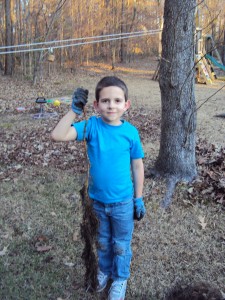Podcast: Play in new window | Download
Subscribe: RSS
This episode was focused on introducing me (Hank), my family, and providing the reason behind this podcast and this site. Some links mentioned during the podcast were:
HOEI.com – My original home on the Internet
GFI.org – Growing Families International
On Becoming Baby Wise: Giving Your Infant the Gift of Nighttime Sleep
YouTube – HOEI.com channel
HomeSchoolSupport.net
Sherry and I got married in 2000. We both love serving in the Growing Families International parenting ministry.
Our Four Boys:
Riley is nine years old. He plays piano, participates in Cub Scouts, and loves outside activities. He also likes playing chess and Wii.
Caden is seven years old. He is our silly boy. He loves being loved. He is very compassionate. He likes Richard Scarry books, trains, Hungry Hippos, and playing Wii. Caden faces some severe medical conditions and does it with a smile on his face. He is the kid who God uses to teach is patience and sympathy.
JJ (Josiah) is four years old and is our little Kool-Aid man. He has a presence about him that brings attention to him when he enters a room. He likes helicopters, trains, and planes. He is a charismatic and charming little boy who loves people. He is the life of the party in our house.
Levi is 18 months old and
The following link was not mentioned but you will hear more about it later. This is where I started my very first blog in 2004.
Caden’s Page – Details about our experiences with our child who has suffered from severe medical conditions.
Subscribe to this podcast via iTunes or RSS:


















